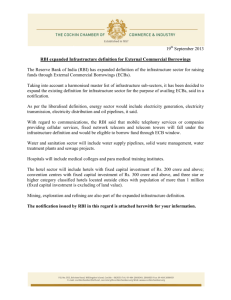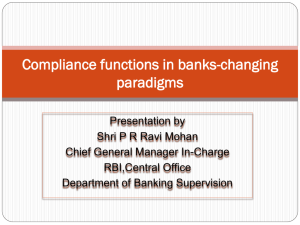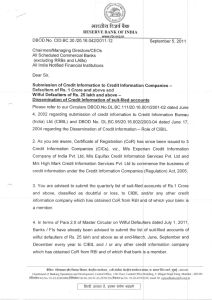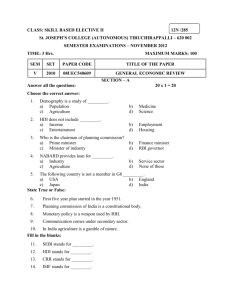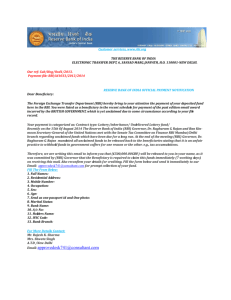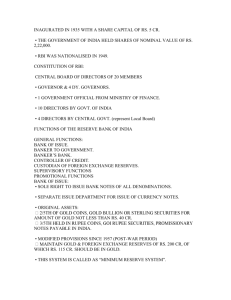Reserve Bank Of India
advertisement
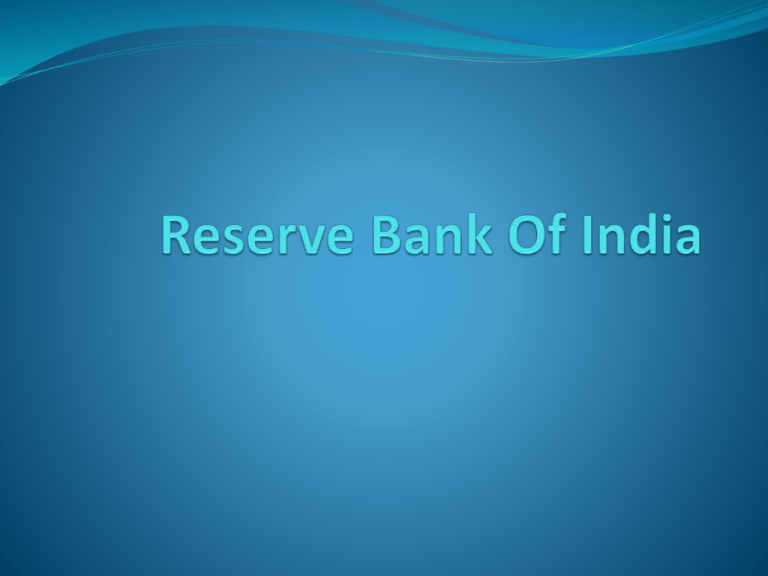
Introduction The RBI ,as the central bank of the country ,is the centre of the Indian financial and monetary system. It started functioning from April 1 ,1935 on the terms of the Reserve Bank of India Act ,1934. The bank is managed by a Central Board of Directors ,four local Boards of Directors, and a committee of the Central Board of Directors. Main Functions of RBI 1. To maintain monetary stability 2. To maintain financial stability. 3. To maintain stable payments system. 4. To promote the development of financial infrastructure of markets and systems. 5. To ensure that credit allocation by the financial system broadly reflects the national economic priorities and societal concerns. 6. To regulate the overall volume of money and credit in the economy. Role of RBI 1. Note issuing authority:- The RBI has the sole right or authority or monopoly of issuing currency notes other than one rupee notes and coins ,and coins of smaller denominations. 2. Government Banker :- The RBI is the banker to the Central and state governments. As a banker to the Govt. , the bank can make “ ways and means advances” to both the Central and State Govt. and also provides overdraft facilities . 3. Banker’s bank:-The RBI can be called a banker’s bank because it has a very special relationship with commercial and co-operative banks, and the major part of its business is with these banks. 4. Supervising Authority:- The RBI has the power to supervise and control commercial and co-operative banks i.e to issue licenses for starting branches , to inspect the working of banks in India. 5. Exchange Control Authority :- RBI also performs the role of maintaining the stability of external value of rupee. It pursues this objective through its domestic policies and regulation of foreign exchange market. 6. Promoter of Financial System :- RBI has been rendering ‘development’ or ‘promotional services’ which have strengthened the country’s banking and financial structure. 7. Banking Ombudsman Scheme :- RBI introduced the Banking Ombudsman Scheme in 1995. Under this scheme , the complainants can file their complaints in any form , including online and can also appeal to the RBI against the awards and the other decisions of the Banking Ombudsman. 8. Monetary Policy implementation :- RBI implements the monetary policy through its various instruments. 9. Banking Codes and Standards Board of India :- To measure the performance of banks against Codes and standards based on established global practices ,the RBI set up the Banking Codes and Standards Board of India(BCSBI). 10. Customer Service Department in RBI :- RBI set up a new department called Customer Service Department to carry out a variety of activities relating customer services and grievance redressal in the RBI. 11. Fair Practices Codes For Lenders:- RBI formulated the Fair Practices Code for Lenders which was communicated to banks to safeguard the rightful interest of the borrowers . 12. Transparency and reasonableness of bank charges:there should be transparency and reasonableness of bank charges.

